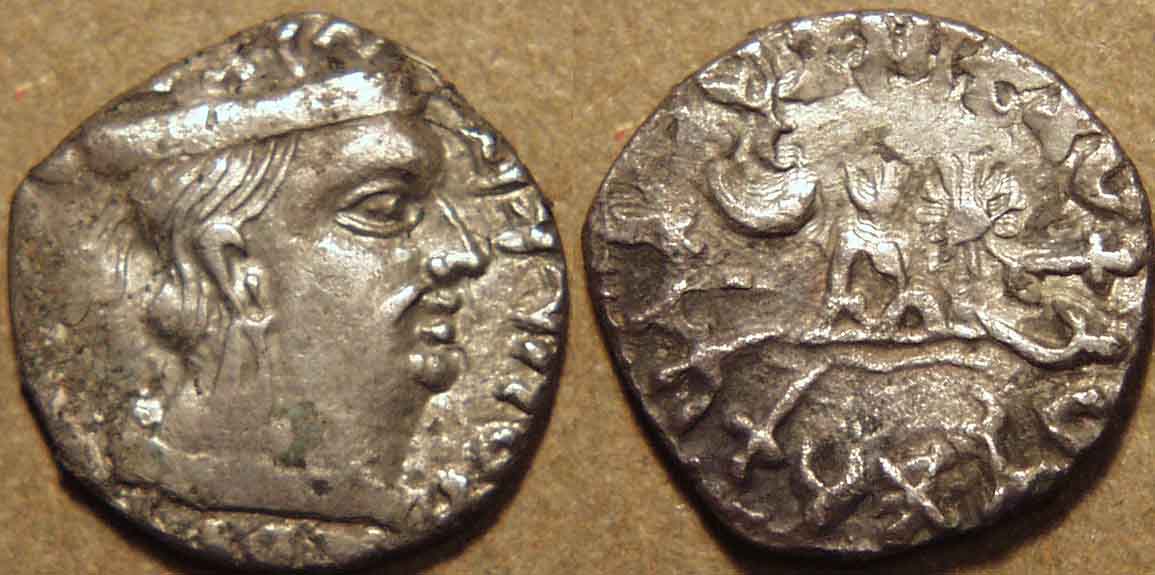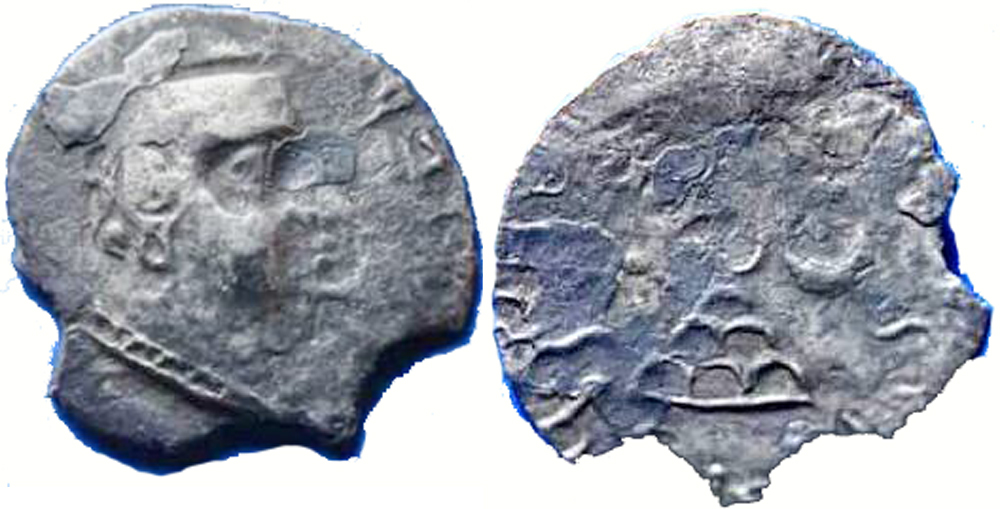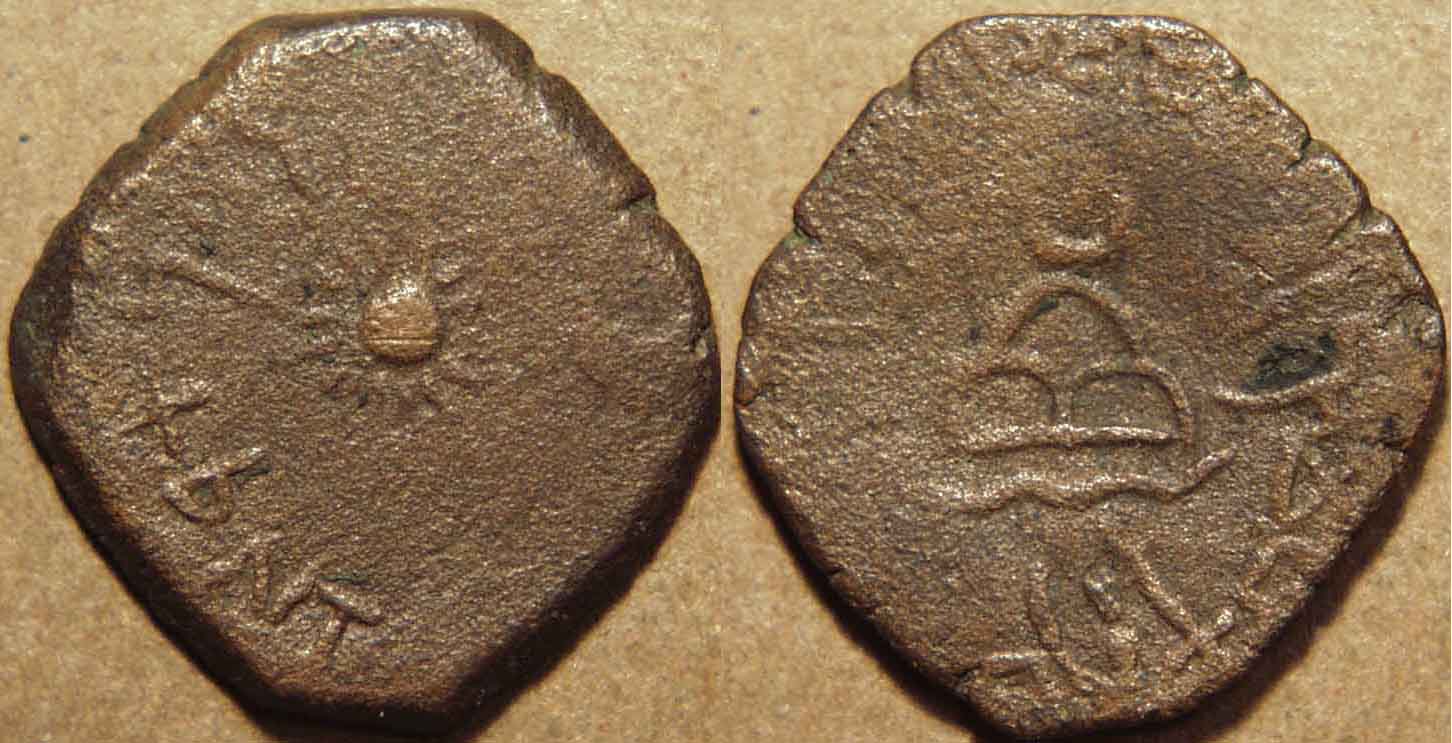
|
|
Chastana was the founder of the main Western Kshatrapa dynasty, the Kardamaka dynasty, and was in all probability
the founder of the Saka era of the year 78 CE. This not only fits with most of the evidence we have, but, most importantly, it seems logical that the Western Kshatrapa kings of
the next 200 years who used the Saka era would have used the era of their founding father. We know of inscriptions of Chastana dated as early as years 6 and 11 and as late
as year 52. Thus he must have ruled to at least the year 130. He appears to have begun his rule while Nahapana was sill ruling also, but there must have been a geographic
separation between their respective kingdoms.
Note that Chastana's silver drachms, while basically resembling those of Nahapana, differ in an important respect. The central devices on the reverse of Nahapana's coins
were an arrow and a stylized thunderbolt. Chastana's coins, however, feature a crescented three-arched hill, with a sun and moon above. This central device must have been
the dynastic symbol of the Kardamaka dynasty and is featured on the coins of all subsequent Kardamaka kings.
|
| The Kardamakas |
Chastana |

|
Chastana, silver drachm
c. 78-130 CE
Weight: 2.01 gm., Diam: 15 mm.
Head of king right, blundered Greek legend around /
Chaitya (3-arched hill), river below, crescent moon and sun above, Brahmi legend around:
Rajno Mahakshatrapa Zamotikaputrasa Chastanasa
 |
 |
The name of Chastana's father is normally rendered as Ghsamotika, but I have shown in a
paper in the 2009 issue of The Numismatic Chronicle that this is incorrect. First of all the Brahmi
letter is not ghsa but ysa. Second, the letter was not meant to be pronounced as written, but to represent the foreign sound z for which Brahmi had no
letter. In fact, Rapson had suggested this in his catalog of Western Kshatrapa coins at the British Museum, and I have recently discovered that Pandit Bhagwanlal Indraji had
written a paper in the 1890 Journal of the Royal Asiatic Society in which he argued the same point.
|

|
Chastana, silver drachm
c. 78-130 CE
Weight: 1.57 gm., Diam: 16 mm.
Head of king right, blundered Greek legend around /
Chaitya (6-arched hill), river below, crescent moon and sun above, Brahmi legend around:
... putrasa sri cha ... |
 |
A remarkable and so far unique coin, almost certainly of Chastana, in which the title sri appears (at 9 o'clock) prior to where the king's name must be. The style of the coin,
the presence of the 6-arched hill, and the letter cha after the sri all point to this being an issue of Chastana. The Satavahana king Gotamiputra Satakarni had
been overstriking coins of Nahapana with his legend gotamiputra siri satakanisa and this may have suggested the use of the title sri to Chastana. The discovery of
the sri was made by Shailen Bhandare. (Photo
courtesy Vishal Parikh.)
|

|
Chastana, copper unit
c. 78-130 CE
Weight: 3.62 gm., Diam: 18-20 mm.
Chaitya (3-arched hill), river below, blundered Greek legend around /
sun and crescent moon, Brahmi legend around:
@3h: Rajno Mahakshatrapa (Zamotikaputasa Chastanasa)
|
|
|